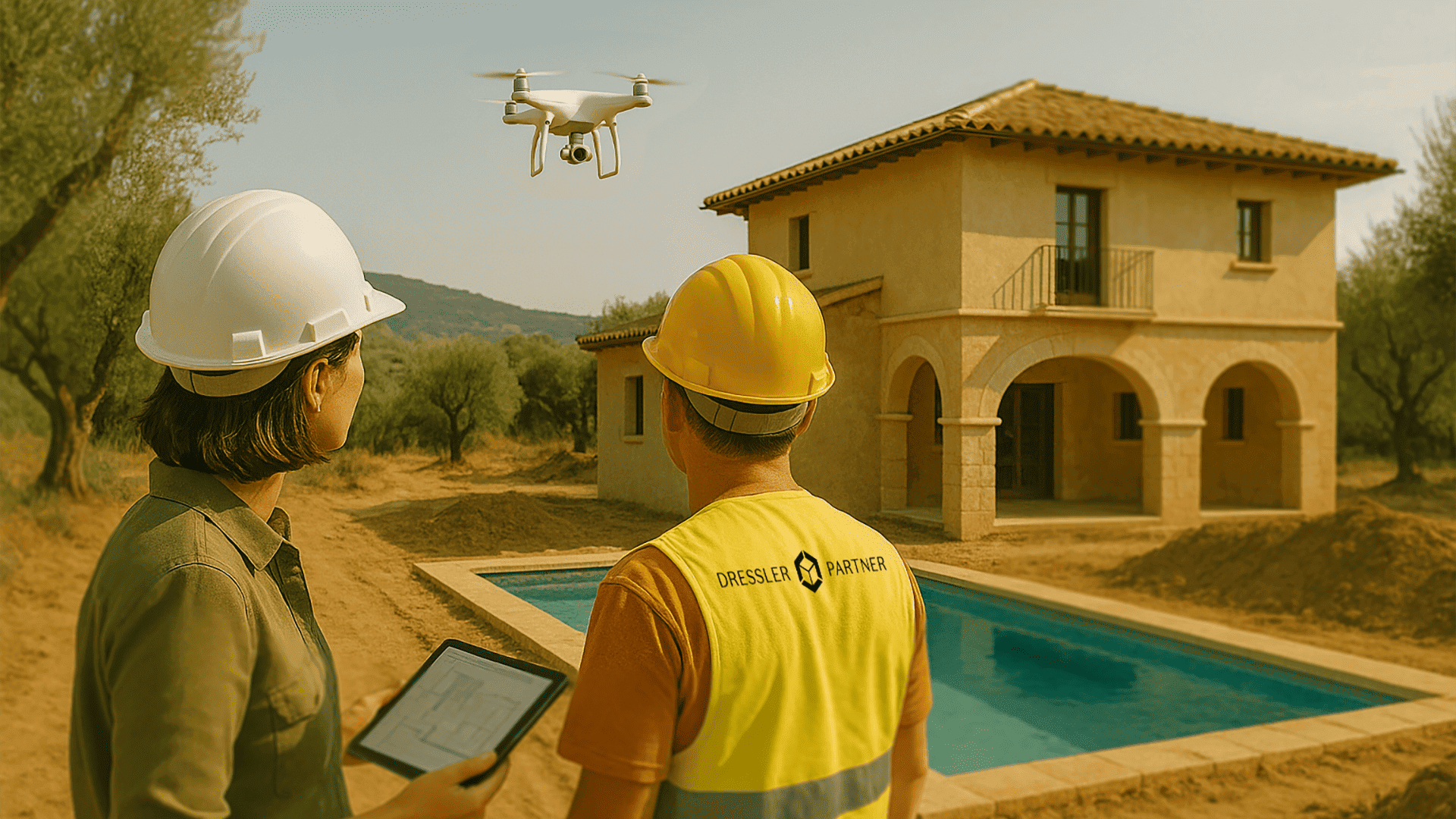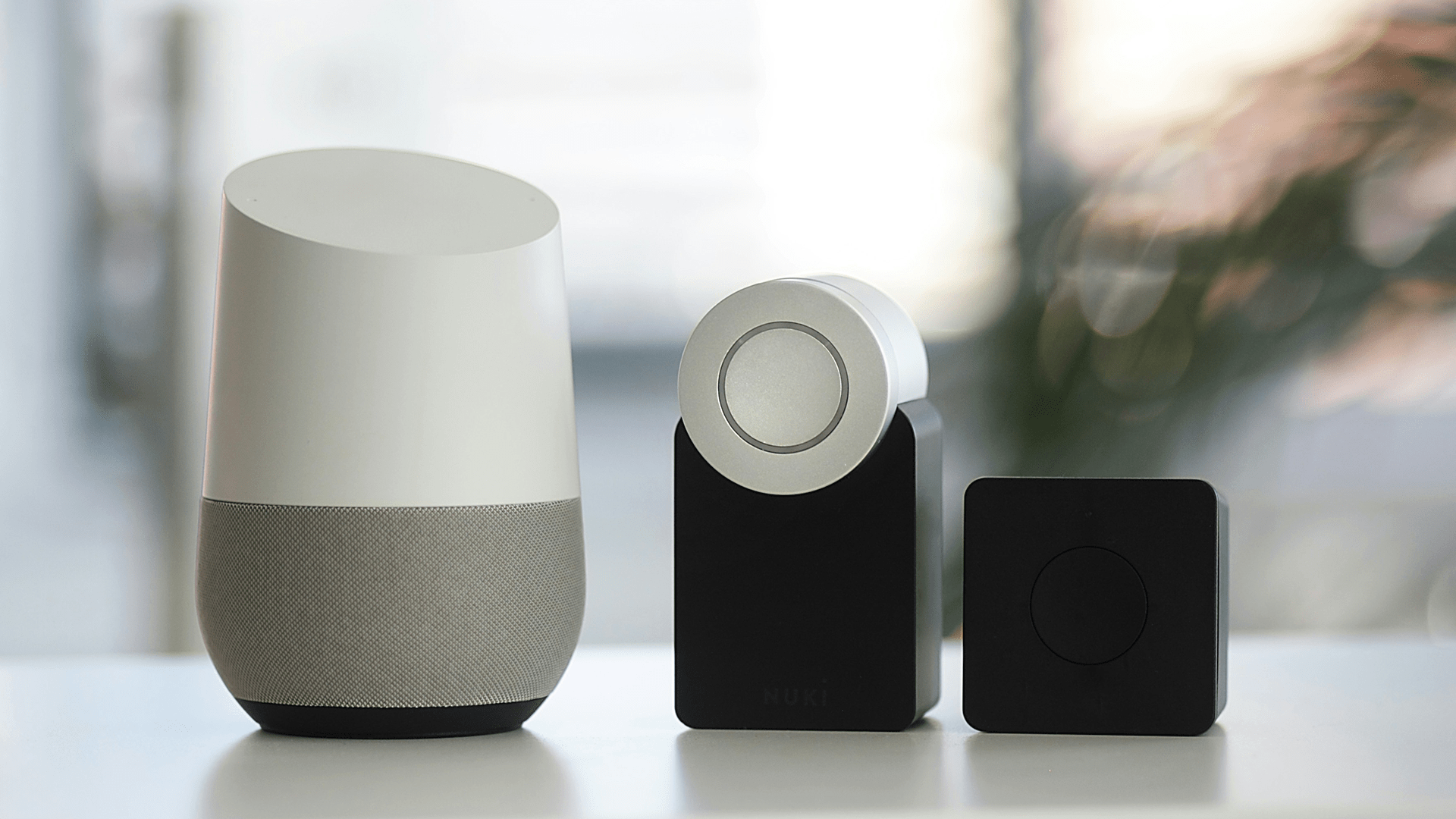

Modern smart home technologies
Mallorca, as one of the most popular islands in the Mediterranean, is attracting many new construction projects, especially when it comes to luxury properties and holiday homes. The integration of modern smart home technologies offers numerous advantages that significantly improve both comfort and security. The following is a comprehensive overview of the latest technologies and specific examples of their benefits.
Smart thermostats and climate control systems
How does a smart thermostat work?
Sensors and automation:
- Temperature sensors: These measure the current room temperature and compare it with the preset target values
- Motion sensors: Some thermostats recognise whether people are in the room and adjust the temperature accordingly to save energy when no one is present
Learnability:
- Behavioural patterns: smart thermostats learn the habits of occupants by monitoring when and how they adjust the temperature. After a learning phase, they can make automatic adjustments to maximise comfort and save energy
- Algorithms: Based on the data collected, thermostats use algorithms to predict when heating or cooling is needed and adjust settings accordingly
Remote control:
- Mobile apps: Users can control the temperature remotely via mobile apps, which is particularly useful for switching on the heating or air conditioning on before coming home
- oice control: Integration with voice assistants allows control by voice command
Geofencing:
- Location-based: Some thermostats use residents’ location data to control the temperature. When residents approach the house, the heating or cooling can be activated, and when they leave the house, the temperature is lowered to save energy
How smart climate control systems work:
Area systems:
- Individual control: modern air conditioning systems can be divided into zones that can be individually controlled. This means that different areas of a building can be heated or cooled independently of each other, increasing comfort and saving energy
Automation:
- Humidity control: some systems adjust not only the temperature but also the humidity to create a more comfortable indoor climate
- Intelligent ventilation: By controlling the air circulation, efficiency is increased and the temperature is evenly distributed throughout the room
Integration with other smart home systems:
- Networked devices: smart air conditioning systems can be networked with other smart devices such as thermostats, lighting systems and security systems to provide a holistic smart home experience
Data analysis of energy consumption:
- Data analysis: By analysing energy consumption data, users can identify potential savings and take measures to reduce energy consumption
- Reports and recommendations: Some systems provide regular reports and recommendations to optimise heating and cooling
Challenges:
- Cost: the initial cost of smart thermostats and air conditioning systems can be high, although they can pay for themselves through energy savings
- Compatibility: Not all systems are compatible with all heating, ventilation and air conditioning systems, which can make integration difficult
- Data protection: The use of data to optimise temperature control can raise data protection concerns
Smart lighting systems:
How they work:
- sensors and automation: Smart lighting systems use sensors to recognise environmental conditions such as brightness, presence and movement. This information is used to automatically adjust the lighting. For example, motion detectors can switch the light on when someone enters the room and switch it off again when the room is empty
- remote control: Many smart lighting systems can be controlled via mobile apps or voice assistants. This allows users to turn the light on or off, change the brightness or even change the colour of the light remotely
- schedules and scenes: Users can set schedules for when the light should be switched on and off, or create scenes that create a specific lighting atmosphere for different activities such as reading, watching TV or dinner
- energy efficiency: Through automation and the ability to adjust lighting to actual needs, smart lighting systems help reduce energy consumption
Advantages:
- Comfort: Simple control and customisation of the lighting to individual requirements
- Energy saving: Reduction in energy consumption through targeted utilisation and automation
- Safety: Presence simulation through time-controlled switching on and off of the light during absence
- Atmosphere: Creation of specific lighting moods for different activities or times of day
Challenges:
- Cost: Initial investment can be higher than with conventional lighting
- Compatibility: Not all systems are compatible with each other, which can make it difficult to integrate different brands
- Data protection: Data protection concerns can arise when using cloud services for control
Security systems:
Sensors and detectors:
- Motion sensors: Detect movements within a certain area and trigger alarms in the event of unexpected movements
- Door and window sensors: Register the opening and closing of doors and windows and can trigger an alarm in the event of unauthorised access
- Glass breakage sensors: Detect the sound of breaking glass and report potential break-ins
Monitoring cameras:
- Indoor and outdoor cameras: monitor and record activity both inside and outside the building
- Night vision and motion detection: Many cameras offer night vision capabilities and can send notifications or start recording when motion is detected
- Live streaming and recording: Users can view real-time surveillance images on their mobile devices and save recordings for later review
Access control:
- Smart door locks: enable keyless access via mobile apps, fingerprints or codes. They can also log access and monitor who enters the building and when
- Video door entry systems: Provide visual communication with visitors before access is granted
Alarm systems:
- Burglar alarm: Activates when unauthorised entry is detected and can sound loud alarm sirens and send notifications to owners and/or security services
- Fire and smoke detectors: Detect smoke and fire and alert residents and emergency services
Remote control and monitoring:
- Mobile apps: Allow remote control and monitoring of the security system, including viewing camera images and controlling door locks
- Notifications and alarms: Send real-time notifications of security-related events directly to users’ smartphones
Advantages: Increased protection
- Comprehensive monitoring: 24/7 monitoring and the ability to respond immediately to security threats
- Deterrence: Visible security cameras and alarm systems can deter potential burglars
Convenience and control:
- Remote access: the ability to control and monitor the security system remotely
- Automation: Integration with other smart home devices for automated security measures, such as switching on lights when motion is detected
Notifications and real-time information:
- Instant alerts: real-time notifications for security-related events
- Live transmission: Access to live video images from surveillance cameras
Easy installation and expansion:
- Wireless systems: many smart security systems are wireless and easy to install and expand
- Modularity: Systems can be customised and expanded as required to meet specific security needs
Costs:
- Purchase and installation: Initial purchase and installation costs can be high
- Subscriptions: Many systems require monthly subscriptions for monitoring services and cloud storage
Data protection and security:
- Risk of hacking: security cameras and smart locks can be the target of hacker attacks
- Data integrity: Privacy concerns regarding the storage and use of surveillance data
Compatibility and integration:
- Interoperability: not all devices are compatible with each other, which can make it difficult to integrate different systems
- Technical requirements: Require stable internet connections and can be affected by network issues
Maintenance and operation:
- System failures: Technical issues can lead to false alarms or failures
- Battery durability: Wireless devices require regular battery changes
Smart speakers and voice assistants:
Voice recognition:
- Microphones: Smart speakers are equipped with multiple microphones designed to capture voice commands even from a distance or in noisy environments
- Wake Words: The devices continuously listen for a specific activation word to recognise when they should be activated
Voice processing:
- Speech-to-text: The recognised voice command is converted into text. This processing often takes place in the cloud, where powerful servers perform speech recognition and processing
- Natural language processing: The text is analysed to understand the user’s intention. Complex algorithms and machine learning are used here
Response generation and action:
- Responses and actions: Based on the analysis, a suitable response is generated or an action is triggered. This can be the playing of music, the retrieval of information or the control of smart home devices
- Text-to-speech: The generated response is converted back into speech and output via the speakers
integration and connectivity:
- Smart home integration: smart speakers can communicate with and control a variety of smart home devices, e.g. lighting systems, thermostats, security systems
- Third-party services: Many smart speakers support integration with third-party services such as streaming services, calendars, shopping lists and more
Convenience and ease of use:
- Hands-free operation: users can control devices and services through voice commands, without physical interaction
- Quick access to information: Questions can be answered quickly and information provided, e.g. weather, news, traffic
Smart home control:
- Centralised control: enable centralised control of various smart home devices, increasing home comfort
- Automations: Users can create routines and scenarios that are activated by voice commands
Personalisation and customisation:
- Customised profiles: Voice assistants can recognise different voices and provide personalised responses and actions based on each user’s preferences/li>
- Ability to learn: Systems can learn from interactions and better respond to individual needs over time
Challenges: Data protection and securit
- Listening in: Concerns that devices could be constantly listening in and recording conversations Data processing in the cloud: Voice data is often sent to the cloud for processing, which poses potential risks in terms of data security
Accuracy and understanding:
- Speech recognition: problems in recognising and interpreting voice commands, especially with a strong accent, dialects or in noisy environments
- Limitations: Limited ability to correctly understand and respond to complex or ambiguous requests
Compatibility and interoperability:
- Platform dependency: Not all smart home devices or services are compatible with all voice assistants
- Systems: Some features may be limited to certain ecosystems or brands
Cost and access:
- Initial cost: The initial cost of the devices as well as possible additional costs for connected services and subscriptions
Technological barrier:
Smart household appliances
Connectivity:
- Wi-Fi/Bluetooth: Most smart devices are connected to the home network via Wi-Fi or Bluetooth, which enables remote control and monitoring via mobile apps or voice assistants
- Internet of Things (IoT): Devices are part of the IoT, which means that they can communicate with each other and work in a coordinated way
Sensors and actuators:
- Sensors: detect various parameters such as temperature, humidity, movement, fill level, energy consumption, etc
- Actuators: Control mechanical components of the appliance based on the sensor data (e.g. opening/closing valves, switching heaters on/off)
Automation and control:
- Automated tasks: Appliances can perform certain tasks autonomously, e.g. a robot vacuum cleaner that cleans at scheduled times
- Remote control: Users can control appliances remotely via mobile apps, e.g. start the washing machine or preheat the oven
Integration with smart home systems:
- Voice control: many appliances can be controlled with voice assistants
- Scenarios and routines: Appliances can be integrated into complex smart home routines, e.g. “Good morning” routine in which the coffee machine, lights and thermostat are set automatically
Advantages:
- Comfort and convenience: Routine tasks are automated, making everyday life easier
- Remote access: Appliances can be controlled from anywhere, increasing flexibility and convenience
Energy and cost efficiency:
- Energy saving: smart appliances can optimise energy consumption, e.g. by automatically adjusting operating times to low tariff periods
- Resource management: Optimisation of water and electricity consumption, leading to cost savings
Security:
- Monitoring and alarms: appliances can be monitored and alarms sent in the event of problems (e.g. overflowing washing machine, open fridge)
- Preventive maintenance: Appliances can report maintenance requirements at an early stage to prevent major damage
Customisation:
- Customised settings: Appliances can save personalised settings and adapt them to the user’s preferences
- User profiles: Multiple user profiles allow customised use for different family members
Challenges:
- Costs: Acquisition costs: Smart devices are often more expensive than their conventional counterparts
- Follow-up costs: Possible additional costs due to software subscriptions or extended warranty plans
Data protection and security:
- Data misuse: collection and processing of large amounts of personal data can lead to privacy issues
- Hacker attacks: Networked devices can be the target of cyber attacks, which can jeopardise the security of the entire household
Compatibility and interoperability:
- Manufacturer dependency: not all devices are compatible with each other, which makes integration into a standardised smart home system more difficult
- Standards: Lack of standardised protocols can limit interoperability
Technical complexity:
- Setup and maintenance: setup and maintenance of smart devices can be more complex and require technical expertise
- Network dependency: Malfunctions in the event of network problems or internet outages
Conclusion:
Smart appliances offer a range of benefits, from increased convenience and energy efficiency to enhanced security and customisation. However, the challenges, particularly in terms of cost, privacy and compatibility, must be carefully considered in order to realise the full potential of these technologies. As development continues and adoption increases, smart home technologies are expected to become even more user-friendly and accessible.

